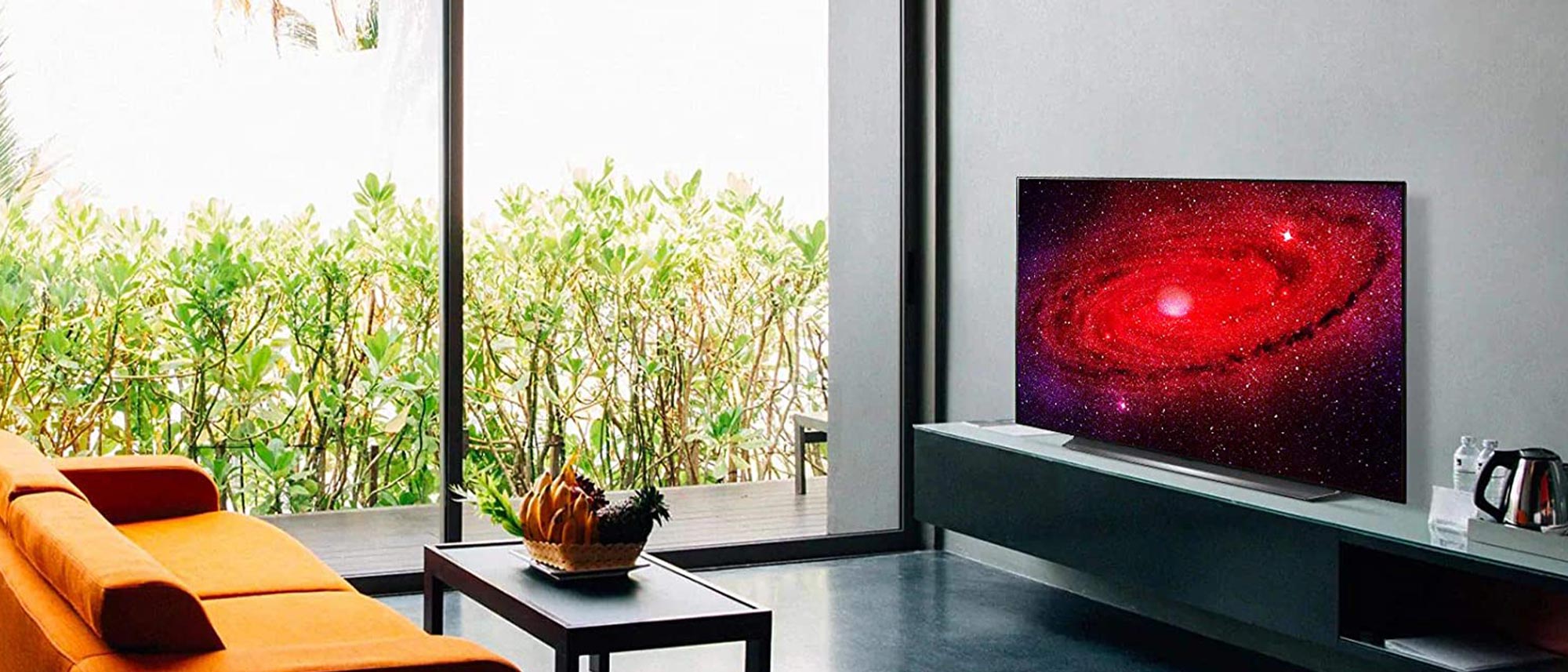Tom's Guide Verdict
An outstanding picture now complemented with impressive sound options–but still at an aspirational price for most buyers.
Pros
- +
Stunning picture
- +
Excellent smart TV feature
- +
Top notch sound capabilities
- +
Ultra thin design
Cons
- -
Relatively high price
Why you can trust Tom's Guide
Price: $2,500
Model number: OLED65CXPUA
Screen size: 65 inches
Resolution: 3840 x 2160
HDR: Dolby Vision IQ, HDR10, and HLG
Refresh rate: 120 Hz
Ports: 4 HDMI 2.1; 2 USB; 1 composite; Ethernet; RF; digital audio
Audio: 40 watts (20-watt woofer)
Smart TV software: webOS 5
Size: 57.0 x 32.7 x 1.8 inches [w/o stand]
Weight: 52.9 pounds [w/o stand]; 71.9 pounds [w. stand]
It's hard not to love OLED. And the LG CX OLED is no exception. With its intense highlights and inky blacks, this $2,500 65-inch OLED (the LG OLED65CXPUA) boasts a crispness that still has LCD and quantum dot sets struggling to catch up.
For the uninitiated, unlike typical LCDs, OLED or organic light-emitting diode displays do not require a separate back light to illuminate the picture. The organic pixels emit their own light when activated. This gives them a distinct advantage because each pixel can be completely turned on or off separately; there's no blurring of images caused by the leaky backlights in LCD and quantum dot sets. It translates into a striking picture that continues to be a head turner.
Editor's Note : Since our initial review in June of 2020, the prices on the LG CX OLED have dropped, and the line has been expanded with a smaller 48-inch model. We have updated the pricing and availability section of this review to reflect those changes. The rating and overall recommendations of our review remain unchanged.
LG has improved on this OLED, beefing up its video processing with a new Alpha 9 Gen 3 processor and its touted AI ThinQ software. One of its primary functions is to differentiate between different types of on-screen objects, such as faces and graphics, for example, to deliver more detailed processing. You can also set the software to detect what kind of content (sports vs. movies) is being watched and automatically adjust the picture.
The CX also supports the most popular 4K high dynamic range formats, including HDR10 and HLG (hybrid log gamma), which is intended for streaming services like YouTube and 4K broadcasts from the likes of DirecTV. And the CX supports the increasingly popular Dolby Vision HDR format, now boosted with an IQ designation that means the TV can adjust the picture according to the perceived light conditions in the room.
- The best TVs right now
- LG CX vs. Sony A8H: Which OLED TV is best?
LG CX OLED review: Price and availability
Technically, the LG CX sits in the middle of the company's line of OLED TVs. The entry-level BX models lack some of the CX video processing, such as the new processor, but cost about $200 less than the CX versions. By way of comparison, LGs super slim 65-inch version of GX model is the premium model line, designed for minimalistic professional installations and sells for $3,000 or more.
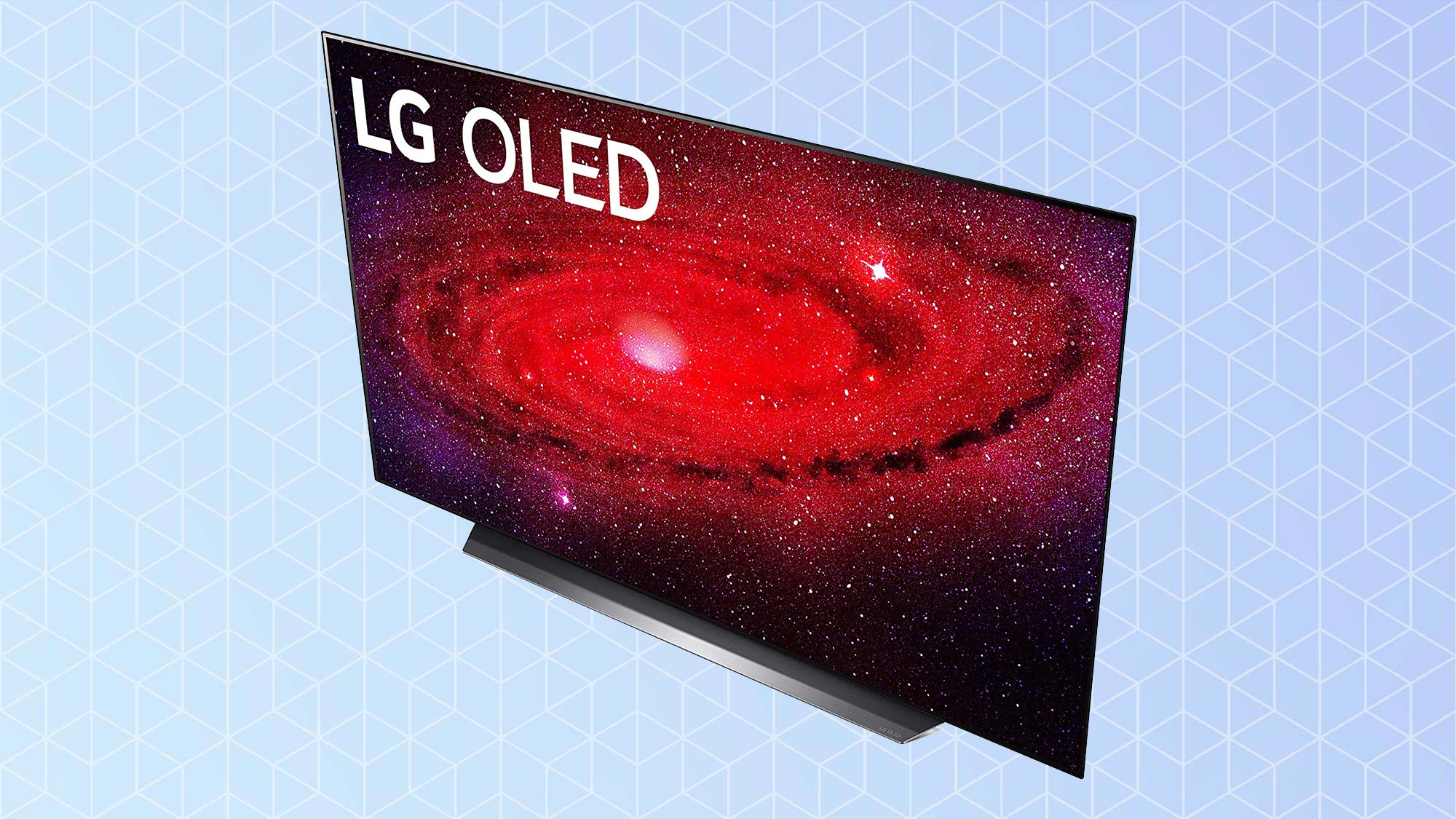
These prices still represent a premium compared to entry-level 4K LCD sets that use quantum dot films. The Vizio M-Series Quantum 65-incher is less than $800, for example, as is the Hisense H9F.
Our review focuses on the 65-inch OLED65CXPUA, but the LG CX OLED is available in several other sizes. With 55-inch and 77-inch models available, you can find a version of the CX OLED TV that fits your home, starting at under $2,000. And as we approach the launch of LG's new 2021 lineup, prices are dropping, with sales frequently offering the TV for well-below the standard retail price. It's also worth looking at our LG promo codes page, where we'll list any available discounts across the LG range.
- 48-inch OLED48CXPUB: $1,499.99
- 55-inch OLED55CXPUA: $1,699.99
- 65-inch OLED65CXPUA: $2,499.99
- 77-inch OLED77CXPUA: $4,999.99
Across these four models, the LG CX OLED line is virtually identical, offering the same number of ports, the same 4K resolution and HDR support, and the same pixel-perfect self-illuminating OLED display. Unlike LCD sets, which may offer fewer backlighting zones on different size screens, LG's OLED technology offers the same sharpness and halo-free contrast on every size of screen. As a result, we recommend the 55- and 77-inch versions of the LG CX OLED just as strongly as the 65-inch model we used for this review.
The 48-inch OLED might be a little small for most shoppers, but it's a tempting choice for gamers. Check out our story I used an LG OLED TV with the PS5 and Xbox Series X — is it worth it?
LG CX OLED review: Design
Another advantage of OLED technology is that because there's no separate back light you can go thin, super thin. So the CX is essentially a big piece of glass that is about a quarter of an inch thick.
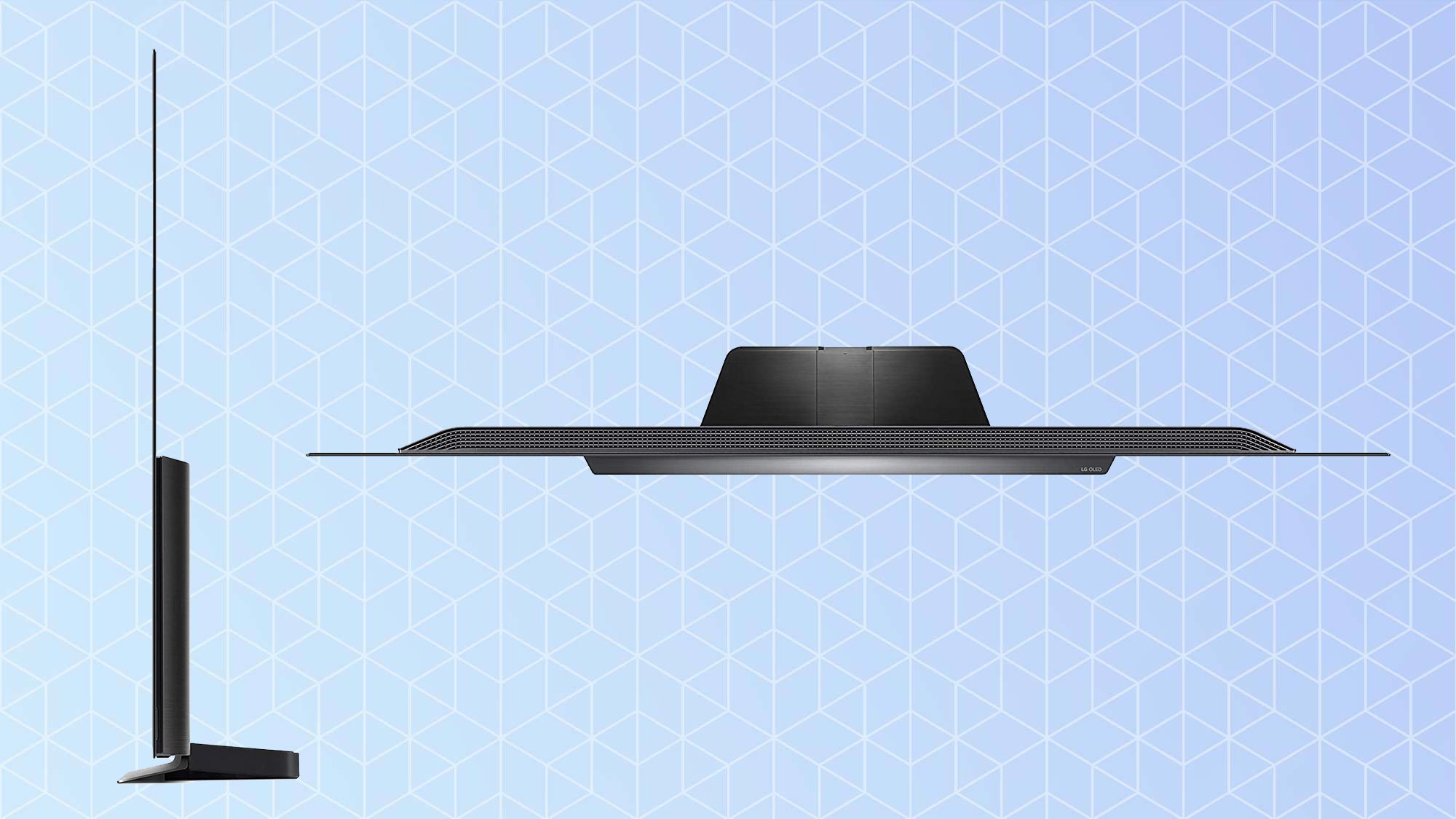
The official specs measure it at 1.8 inches to account for the part of the panel that accommodates the necessary ports and audio components. Around the edge, the screen has a thin, black metal frame less than a quarter of inch thick, but there's a visible black border on the glass itself of about half an inch.
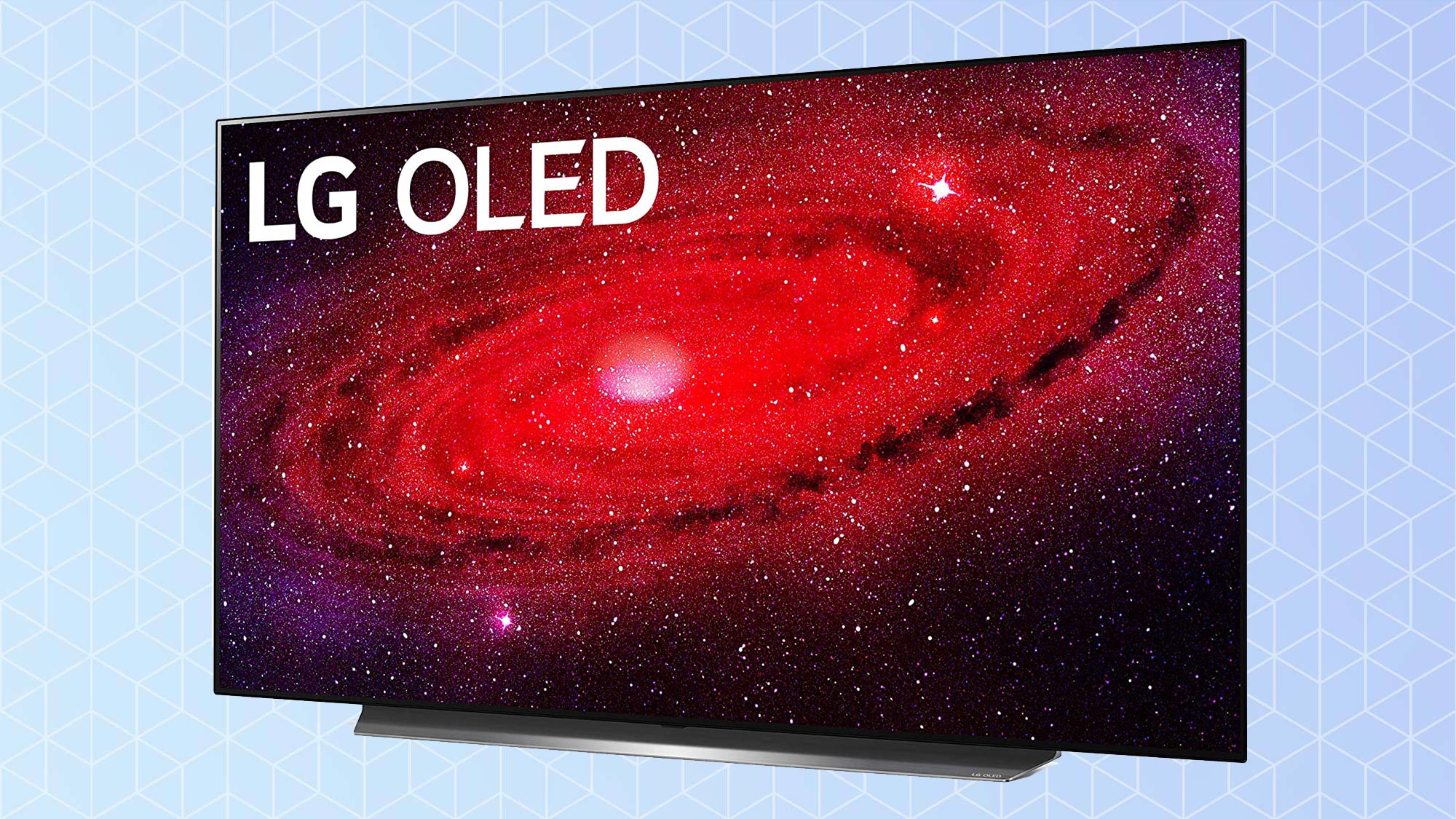
The LG CX can be wall mounted using a standard VESA 300 x 200 bracket. However, the included wedge-shaped table-top stand makes for a very sturdy support. It attaches with a handful of screws, but it takes two people to set it upright on a credenza.
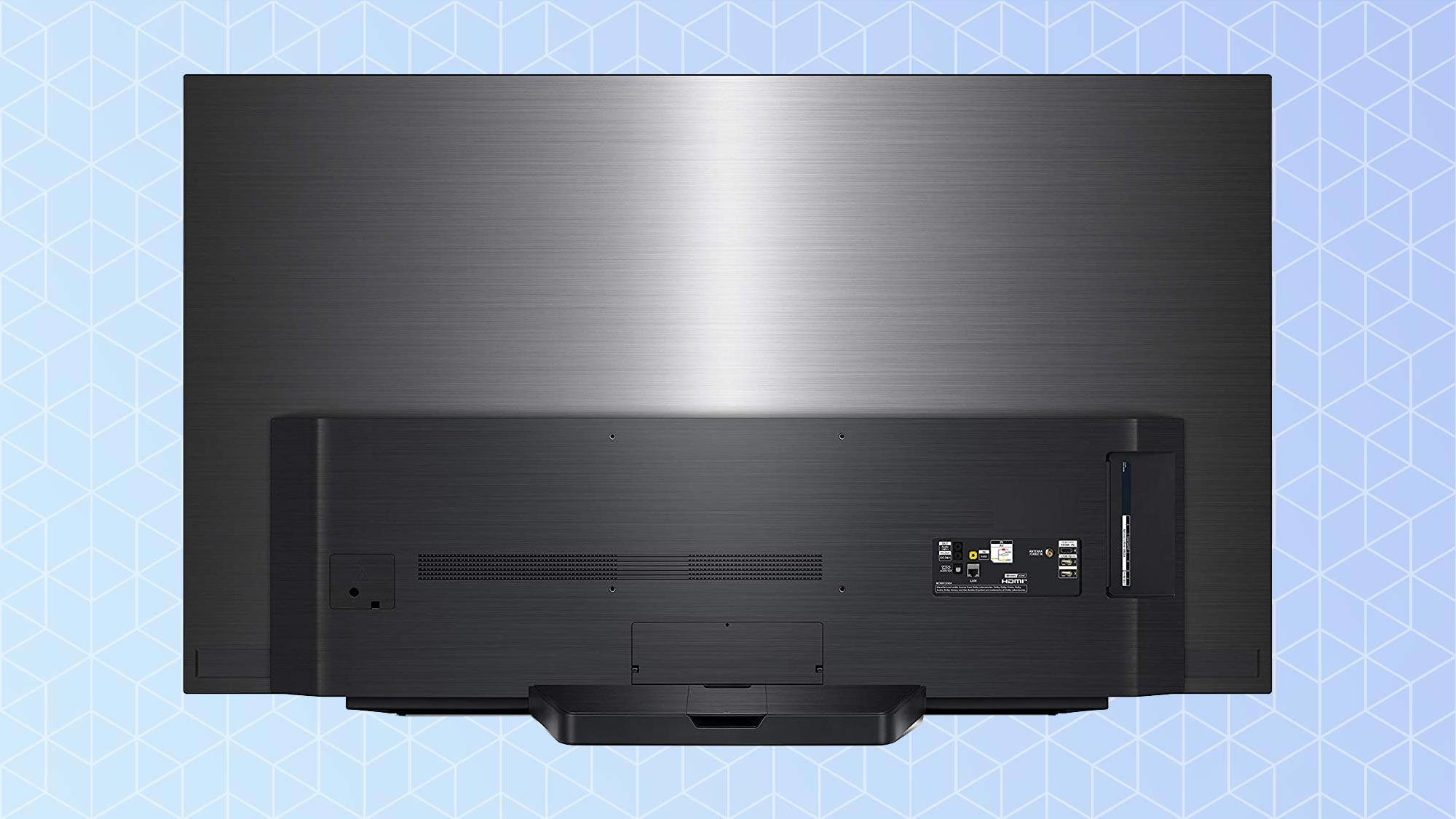
LG CX OLED review: Ports
As one might expect, the LG CX OLED is well appointed when it comes to making the necessary connections. On the back are a total of four HDMI 2.1 ports plus three USB 2.0 ports.
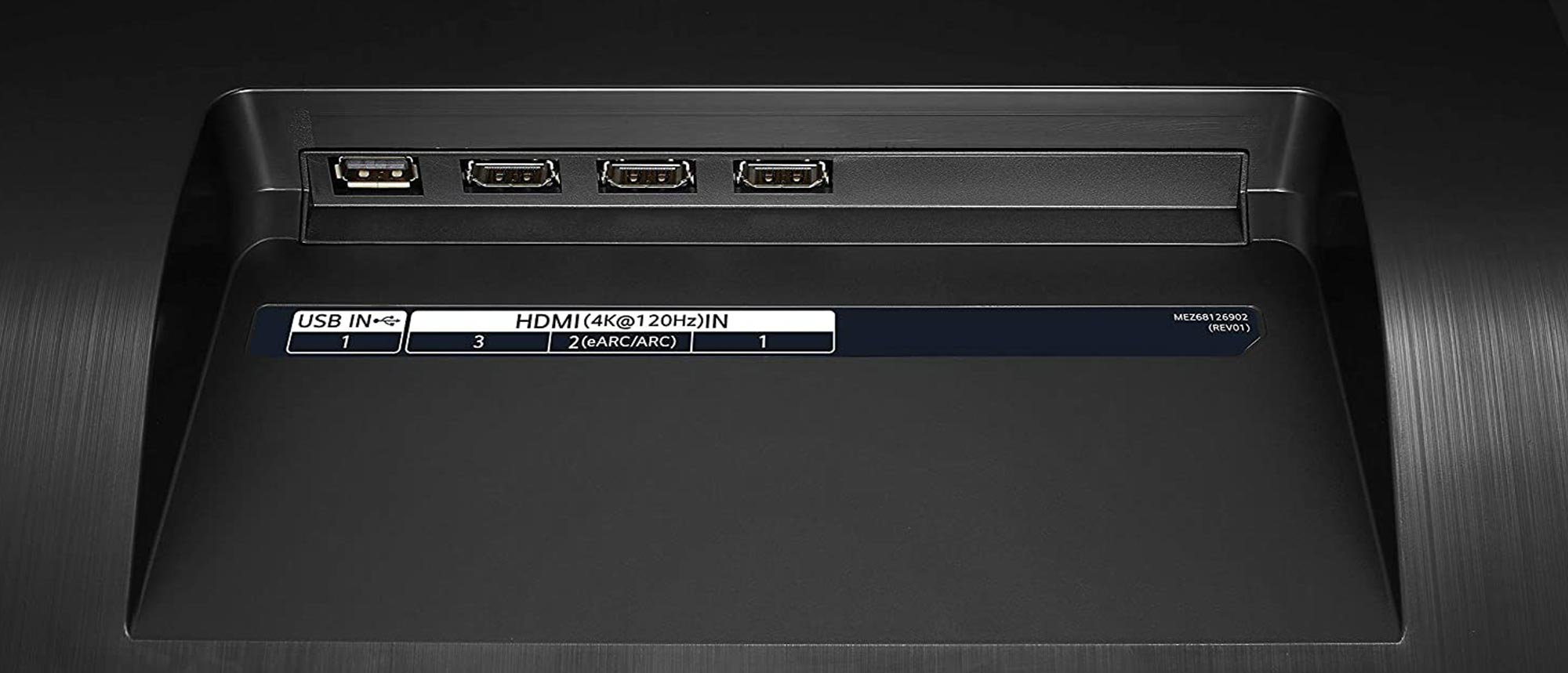
For older video equipment, there's a single plug that comes with a composite video adapter dongle. Professional installers will probably make use of the set's Ethernet port while cordcutters will be happy to see there's an RF coaxial plug for an antenna. For sound, there's an optical digital audio output and a mini jack for wired headphones.
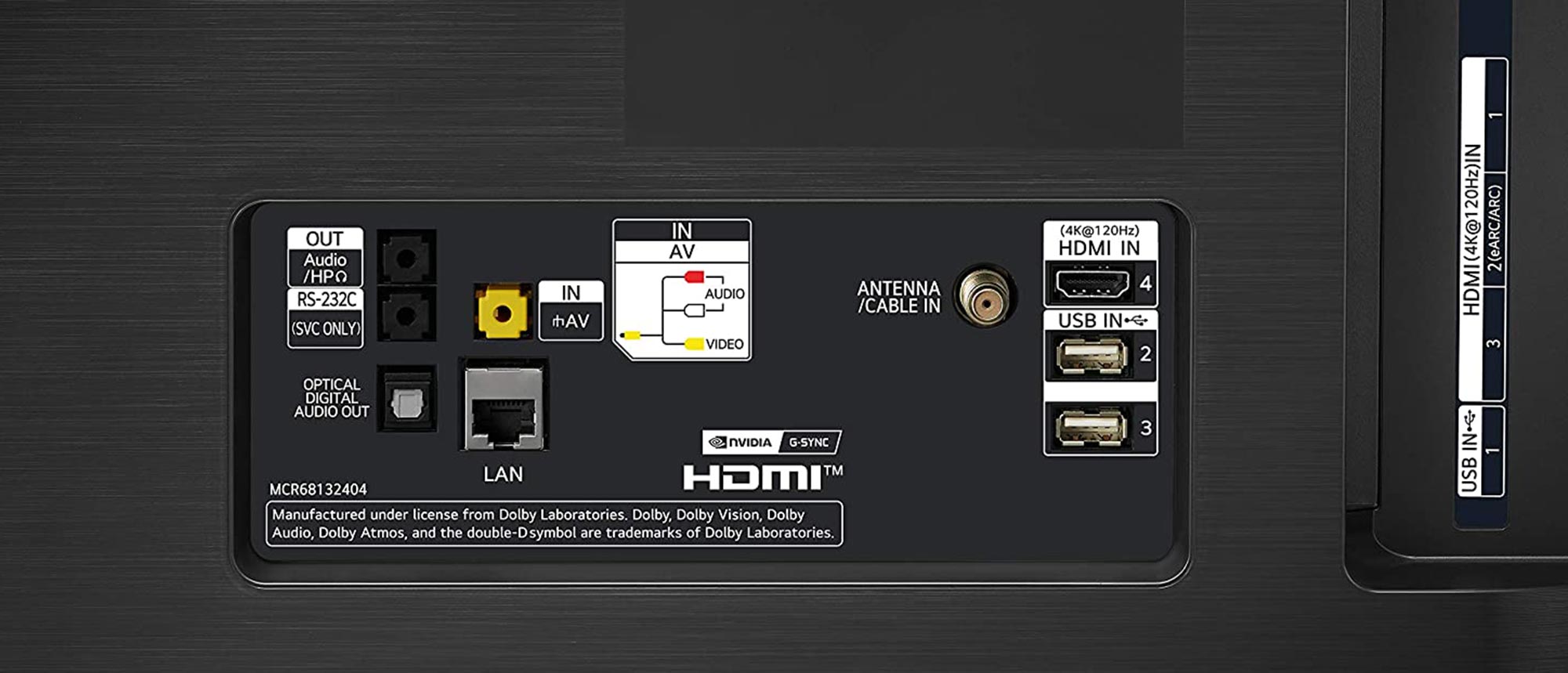
On the wireless side, the LG CX has the standard Wi-Fi support (802.11 a/b/g/n/ac); Wi-Fi 6 is still too new to appear in most TVs today. Also included is Bluetooth to pair up with headphones for private listening or wireless satellite speakers. The LG set also supports the aptX format for improved wireless fidelity. And, yes, the set supports Apple Airplay2 as well as Apple Homekit.
LG CX OLED review: Performance
In setting up the LG CX 65 you'll find a welter of image options to satisfy virtually any taste. Like other sets of its ilk there are several preset picture settings, including modes for sports, movies, gaming, vivid pictures, and HDR effects. It also includes the new Filmmaker Mode, which produces images as close to the original picture as possible by disabling video processing effects like motion smoothing and reinstating the original movie's aspect ratio, colors and frame rates. Like Cinema mode, it can look dimmer than other settings but it produces the most accurate picture.
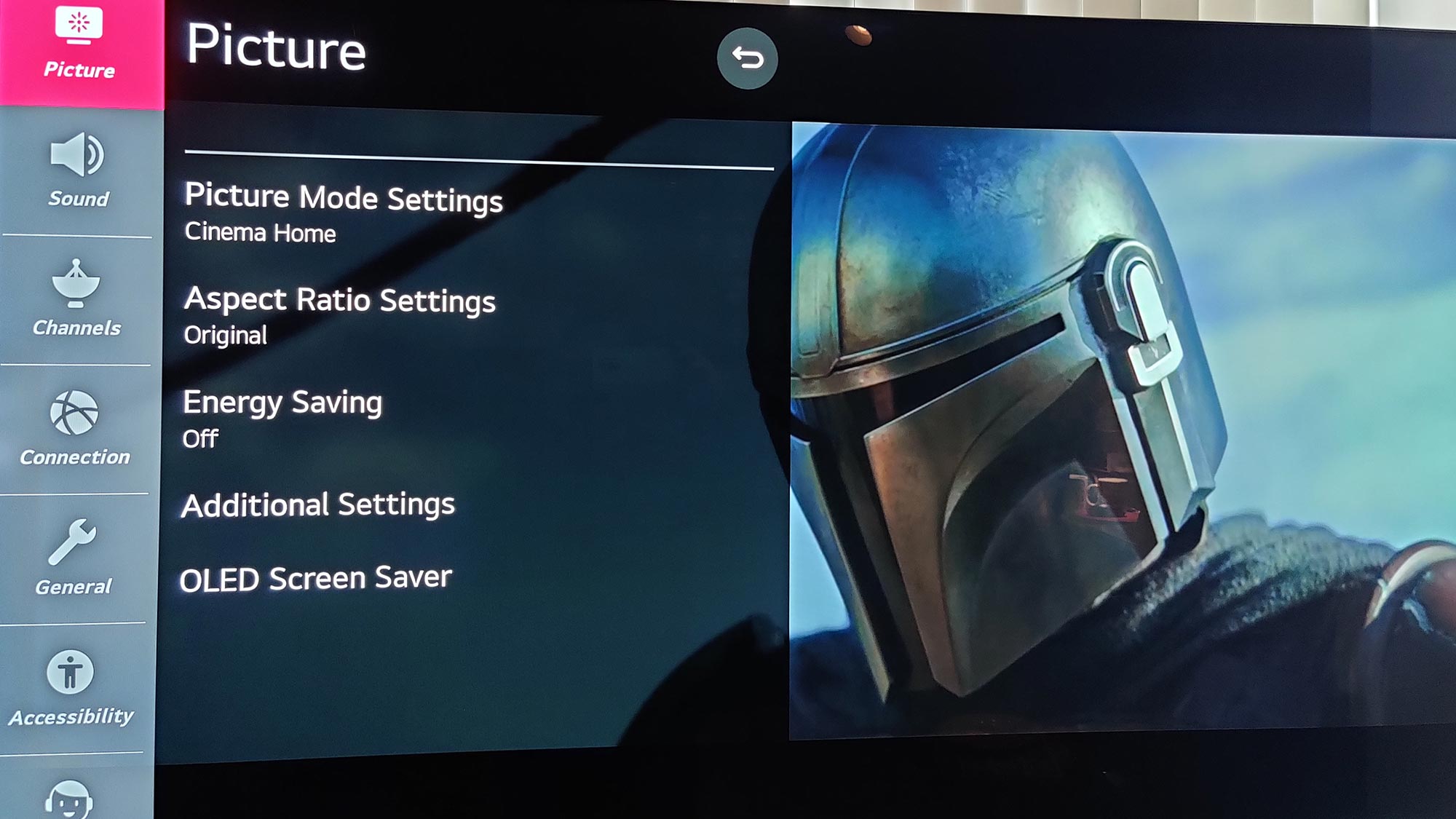
Contrast this with the LG CX's AI Picture Pro setting, which tends to process and smooth out selective parts of the image differently. While the AI Picture Pro setting worked well on cable HD broadcasts and material like news shows, for our testing of 4K material we toggled between Cinema and Filmmaker modes.
Overall, color fidelity of the LG CX was excellent with noticeably improved reds. Viewing angles were exceptional. There is no loss of brightness or color saturation no matter how poor your viewing position may be sitting on the end of the couch. There's also an almost complete lack of halo artifacts, with stars showing as precise pinpoints against dark skies rather than diffuse white blobs.
With the 4K Blu-ray copy of Star Wars: The Rise of Skywalker, details like the fiery red reflection of his lightsaber in Kylo Ren's eyes delivered a captivating intensity. We could even make out details in the red flickering light saber itself that were a mere red blur in the standard Blu-ray version. And the falling snow flakes scene? It looked almost three dimensional.
The 4K version of Apocalypse Now Final Cut provides some rather challenging test material as well. But the LG CX OLED delivered the movie effortlessly in all of its widescreen glory. In Filmmaker Mode it produced much deeper greens of the verdant jungle and more realistic skin tones (warts and all) than any other version we've seen on LCD sets.
One of the most obvious differences between sets like the CX OLED and less expensive 4K models like the Hisense H9F, is when they face scenes with smooth color transitions like sunsets. Lesser models will reveal considerable banding rather than seamless color changes. In the skies over the festival scenes in Skywalker, there wasn't a hint of banding with the LG set and even in upscaled situations, the CX OLED managed to handle most of the transitions without odd lines or distortions.
With many viewers fixated on binging multiple shows, we also tested the set using various services delivering streaming 4K content. On Netflix, titles like Lost in Space in Dolby Vision looked impressively sharp and clear. On Disney+, the reflections in the Mandalorian's armor had a new found realism and laser blasts looked stunning.
Most material is not available in 4K, so it's important that TVs do a good job upscaling regular HD content. The LG CX didn't let us down. It handled the regular Blu-ray disc of The Rise of Skywalker with aplomb, creating no artifacts or dropped images even in the fast-paced canyon chase scene. Explosions lacked the pyrotechnical intensity of the 4K HDR version but still looked impressive. The LG CX even upscaled an old DVD of Luc Bresson's The Fifth Element without generating excessive picture noise or image distortions.
One area where OLEDs have traditionally fallen short is in their ability to reveal shadowy details in darker scenes. We found the latest LG CX OLED has largely overcome these issues--matching many of the abilities of the competing Sony OLED Bravia A1. In the veiled dark scenes when Kylo Ren meets the evil Emperor in Skywalker, the CX OLED not only did an outstanding job switching from bright to dark as lightning illuminated the scene, but it also did a good job keeping dark details of the Emperor's face visible. And in a comparison of the notoriously dark Kurtz divan scene from a 4K version of Apocalypse Now, the LG OLED did as well as an LCD Samsung K9000 4K (an older model that we use as a baseline) in turning out Marlon Brando's bald pate.
LG has also added several performance features for gaming. There's a reduced latency game mode (auto low latency mode), of course, which worked well with our Xbox One 4K games. LG also supports Nvidia's G-Sync and the open FreeSync for those inclined to connect one of the best gaming laptops and looking to get the smoothest images possible. And LG supports HGiG for HDR gaming.
One additional note: Those concerned about burn-in and image retention should note that LG includes a pixel refresher operation designed to clear out any image retention (like the station bugs on news programs), as well as a screen shift program that moves static images over a few imperceptible pixels to deter burn in.
LG CX OLED review: Test results
By and large, our benchmark performance numbers confirmed what we saw in hours of critical viewing. Submitted to our usual examination with a X-Rite i1 Pro spectrophotometer and SpectraCal CalMAN Ultimate calibration software, the 65-inch LG CX delivered an accurate and wide spectrum of colors. It even impressed us with low latency times for gamers.
Color accuracy of the LG CX was one of its highlights. It turned in a Delta-E score of 1.95. We consider any number of 2.0 or lower to be a respectable result, with the lower scores being better. In fact, we've had other results that were better, such as those from the Sony Bravia A8H OLED (1.54) and last year's Samsung Q90 QLED (1.51), but most viewers would be hard pressed to tell the difference. On the LG CX, the jungle greens in Apocalypse Now and lightsaber reds of The Rise of Skywalker were flawless.
Boosting that impression, the 65-inch LG CX delivered one of the widest color gamuts we've seen. It produced 134.57 percent of the Rec 709 color space, which is to say it surpasses the old standard to yield more intense colors and a more sparkling picture. By way of comparison, a set that we like quite a bit, the Sony Bravia A8H OLED, only produced 108.94 percent of the Rec 709 space and the Samsung Q90 QLED only 99.83 percent.
All that prowess adds up, making the LG CX OLED one of the best OLED TVs on the market, not to mention one of the best 4K TVs you can buy.
Lastly, the LG CX proved its mettle in playing games. When it needs to be quick, the LG CX can drop virtually all of its video processing overhead in its appropriately named auto low latency mode for gamers. In our tests, it worked well with a measured lag time of just 13.1 milliseconds. That's a significant improvement over results we have seen from other top-of-the-line sets, such as Samsung's Q90 (24 milliseconds) and Sony's A8H OLED (18 milliseconds). The bottom line: The LG CX is one of the best gaming TVs you can buy.
- LG CX OLED vs. Samsung Q90T QLED: Which should you buy?
LG CX OLED review: Audio
A traditional weakness of big flat panels has been their sound skills. Their svelte design lacks the space for conventional speakers. But LG has largely overcome the problem by throwing a number of technologies into the CX OLED models.
To begin with, the set includes an AI Acoustic Tuning setting that uses the remote control's microphone to calibrate the sound and tailor the audio to your particular room. It takes just a few seconds to perform the calibration, after which you can compare the before and after audio. In our test environment, the AI result (in standard mode) actually sounded better, delivering an improved soundstage that put the music and audio more front and center. (We found the optional bass mode was too boomy and the treble setting was predictably too tinny.)
The LG CX OLED also supports Dolby Atmos, which was surprisingly effective in the jungle scenes in Apocalypse Now given the set only has only 2.2 channels to work with. Insects seemed to buzz around outside the image before the tiger lept from the center of the screen. There are multiple preset sound modes, as well, with the Cinema mode delivering some of the most pleasing effects. The Skywalker Blu-ray nicely reproduced the rippling bass notes of the Millennium Falcon as it knocked over Storm Troopers with its exhaust. Should none of the presets make you happy, there's a five-band equalizer, hitting frequencies from 100 Hz to 10,000 Hz, so if you want to tweak the sound you can do so in Standard Mode.
Owners should compare the audio modes depending on the material they happen to be watching. Aha's Take On Me 4K video in AI Sound Pro mode over-emphasized the high end, producing too much sibilance. The Music mode setting balanced out the song and added more bass but the sound was more muted. Personal preferences here will doubtless vary.
LG CX OLED review: Smart TV features
LG has spent years refining its webOS smart TV software and now may have the best proprietary program on the market. Coupled with its remote that uses a floating on-screen cursor, the webOS's flexible system of tabs and easy-to-follow graphics make it one of the more accessible smart TVs on the market. LG also supports popular apps like those from Hulu, Disney+, and Showtime, but it doesn't offer the extensive array of apps that Android TV-based sets like those from Sony or Roku models from TCL cover; apps on those models number in the hundreds. Nevertheless, we found only one significant app missing from LG CX, the Criterion Channel, which given the attraction of this set for movie lovers will be sorely missed.
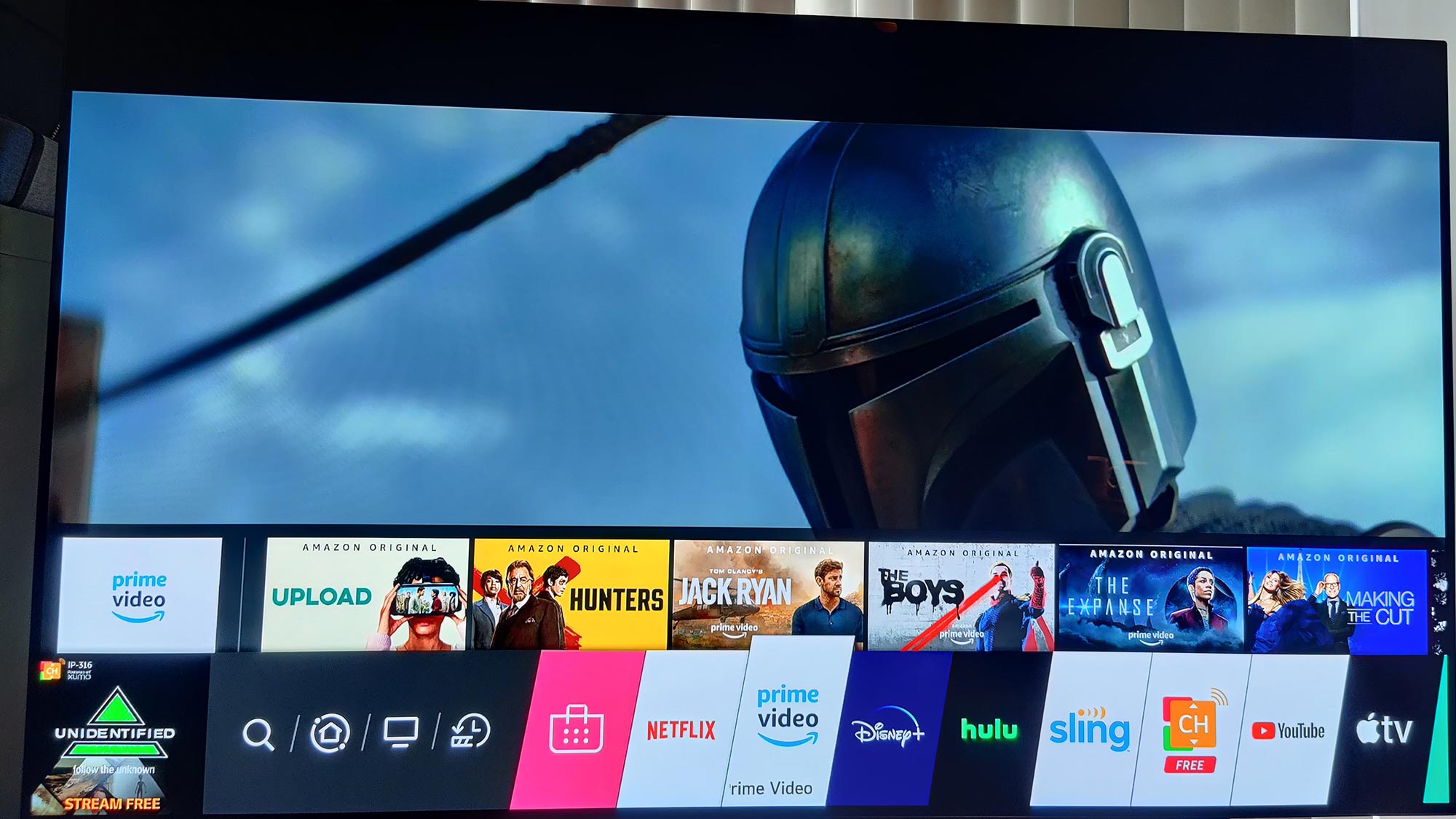
All the apps we tested, from Netflix to Vudu, worked as well as or were even more responsive than their Roku counterparts. There were a couple of minor imperfections, such as the Pandora music app failing to properly display lower search results on the screen, but a subsequent software update fixed the issue. LG is diligent about keeping apps current and the extremely capable webOS benefits from those constant improvements.
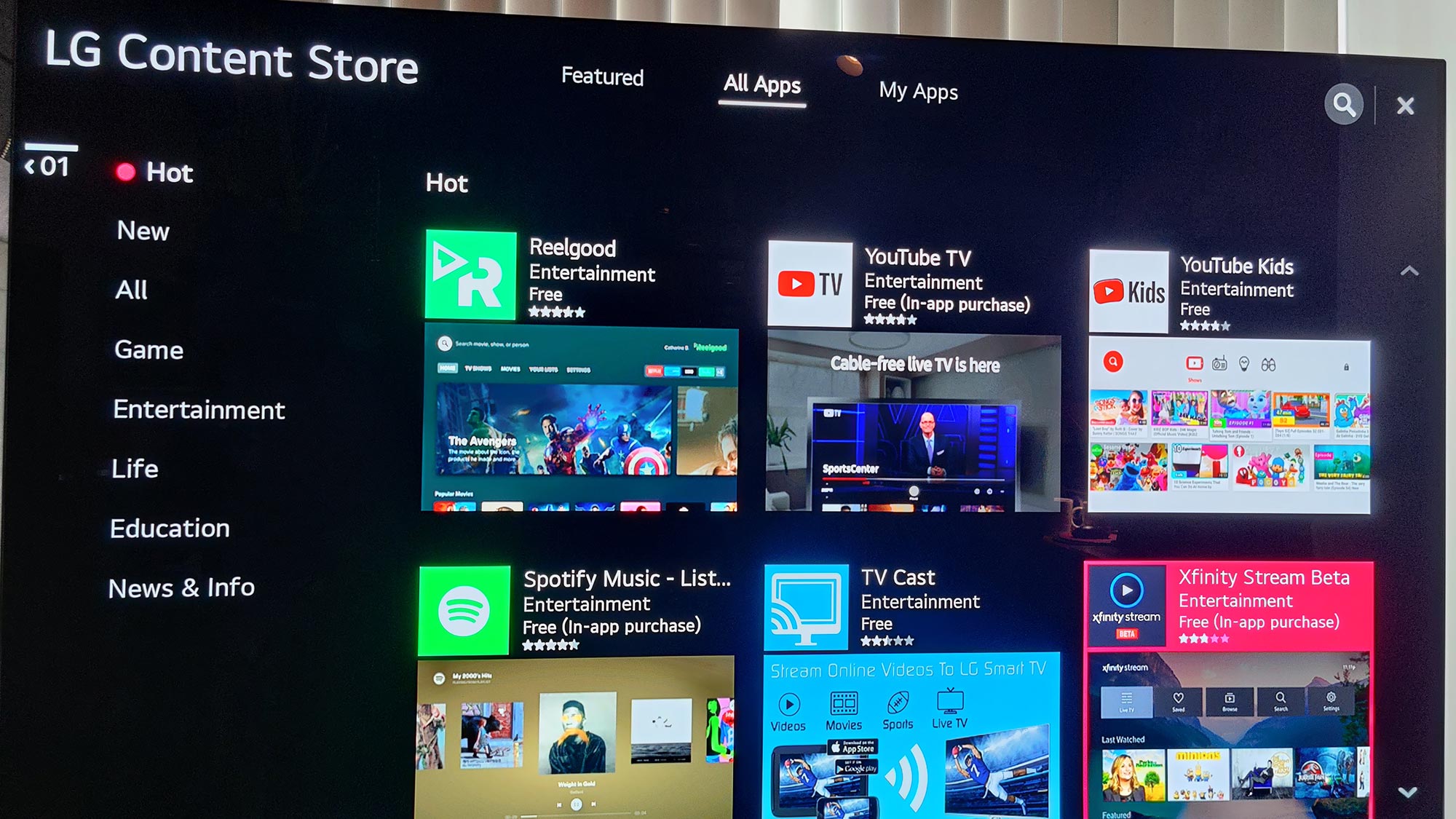
All of this is aided and abetted by LG Channels, an aggregated list of free streaming services and movies powered by Xumo. When we connected an antenna to the LG CX OLED we received not only 33 local over-the-air channels but also the collected LG channels, which appear in the same electronic guide, similar to Samsung's offering.
LG CX OLED review: Remote control
LG calls its controller a Magic Remote, which may be a bit of an overstatement. It has a scrolling/clickable wheel in the center for moving a cursor around the screen like a wireless mouse, as well as the usual numerical and volume and channel buttons.
It's a well-balanced, curved remote that can also be used as a universal controller. It took us just seconds to get the remote to recognize a PlayStation 4 and a Roku box, for example, and assume command of those devices.
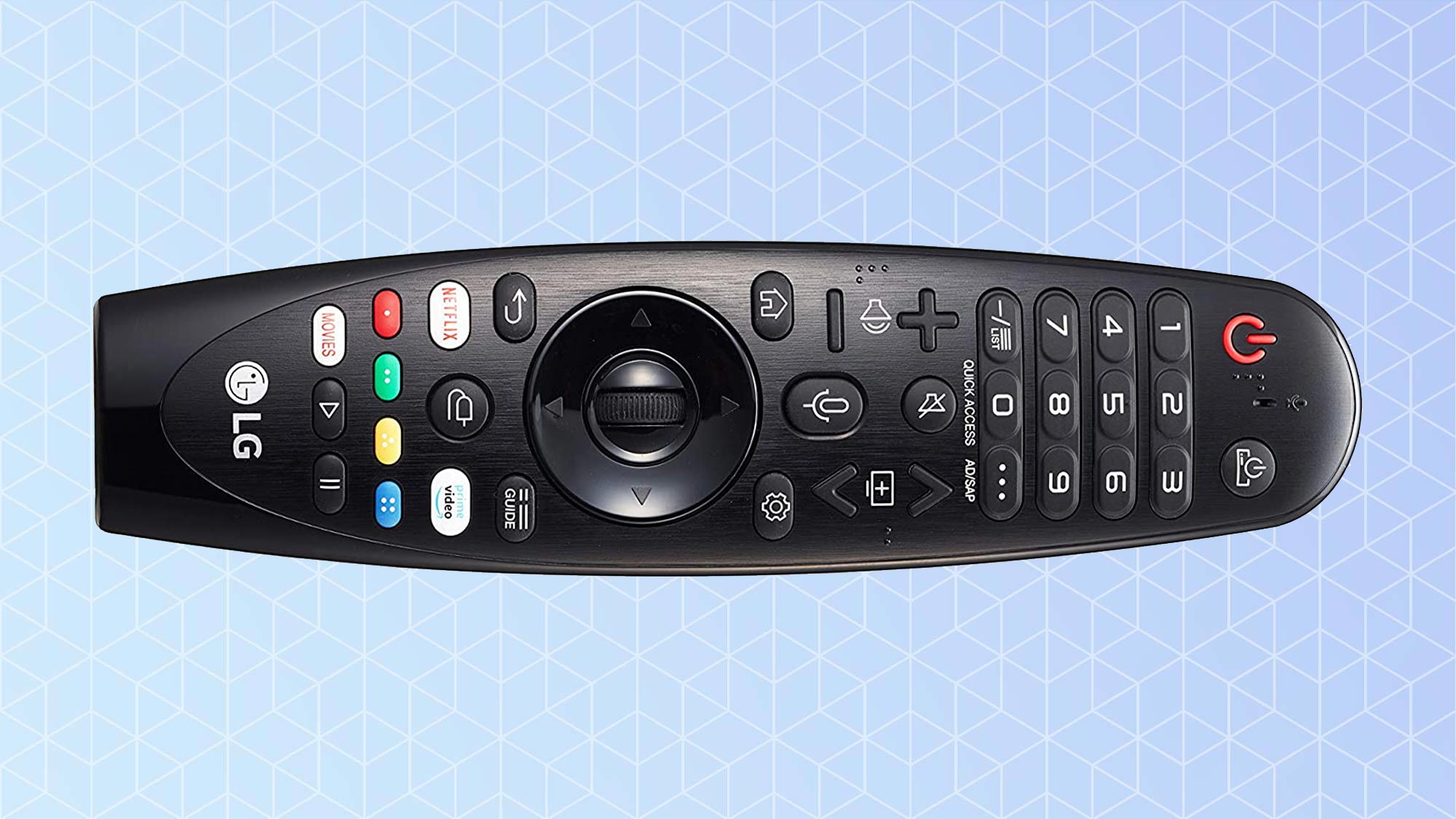
Pressing and holding a microphone button on the remote triggers Google Assistant, which works remarkably well in this context. Ask for a Woody Shaw's Every Time I See You while in the YouTube app, for example, and you'll get the appropriate video. You can also tell the set to "switch to live TV channel 7" and get the right response.
Unlike the more premium members of the LG OLED family, the CX OLED does not have far-field microphones built-in, so you're limited to the microphone input on the remote. That's a strike against convenience, but it also makes the CX OLED a little more privacy-friendly, and enables the unique audio calibration feature, which significantly improves the sound.
LG's ThinQ smart TVs also offer built-in support for Amazon Alexa, and are the only sets to offer both Google and Amazon voice assistants without requiring a separate smart speaker or similar device. The addition of Amazon Alexa support makes the whole process of finding something to watch much easier.
LG CX OLED review: Verdict
With 65-inch 4K sets, such as the Vizio M-Series Quantum and Hisense H9F floating in the $700 to $800 range, many shoppers may be hard pressed to justify spending $2,500 on this OLED set. On the other hand, the LG CX OLED will reward movie fans who make the investment with an unparalleled picture. We found it also compared well to much more expensive models, such as Sony's $3,300 65-inch A9G Master Series OLED.
If you are looking for the best 4K picture available, the LG CX OLED will not disappoint. The addition of improved sound and some of the best smart TV features including voice control just make this package all the more appealing, and one of the best LG TVs the company has ever made.
John R. Quain has been reviewing and testing video and audio equipment for more than 20 years. For Tom's Guide, he has reviewed televisions, HDTV antennas, electric bikes, electric cars, as well as other outdoor equipment. He is currently a contributor to The New York Times and the CBS News television program.
-
TNTelectrix Great review thanks! Really interested how it compares and contrasts to last year's C9 ? Is the new CX really that much better than the C9 ? Or are there some ways the C9 is actually still better in some areas?Reply -
IcedCorn Couple of thoughts:Reply
WebOS isn't bad but there are a few other apps that are not part of WebOS:
Philo
HBO Max
B/R Live
FuboTV
Which is a bit of a bummer. I will say on the positive side that the Magic remote does handle AppleTV nicely (where you can get all those apps), and the audio is amazingly good for a TV that thin. -
Quietpro Just an FYI, you're link to the LG CX on Amazon actually takes readers to the BX. It would be very easy to unintentionally "tricked" into BUYING the wrong TV by this.Reply
